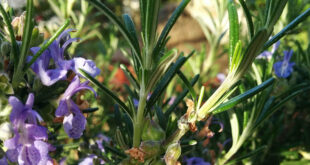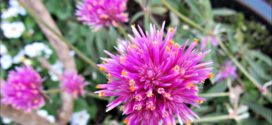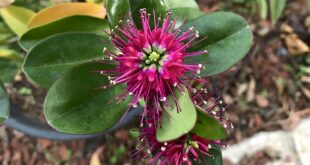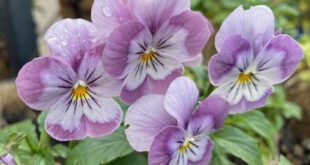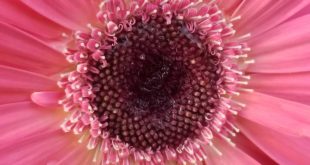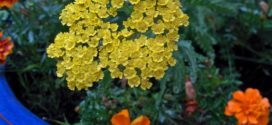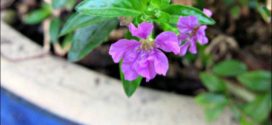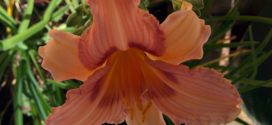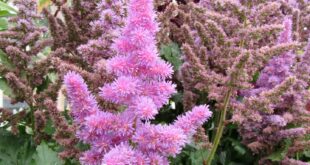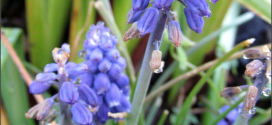Rosemary is one of those wonderful herbs that makes a beautiful ornamental plant as well as a welcome culinary seasoning. Its Latin name, Rosmarinus officinalis , means “dew of the sea” and rosemary is most closely associated with the cooking of the Mediterranean area. However you don’t need perfect sunshine, sea mist or even a never ending summer to successfully …
Read More »Flowers
Globe Amaranth
Globe amaranth is a compact annual that typically grows 12-24” tall on upright branching stems. The true flowers are insignificant, tiny, white to yellow trumpets that are only visible close up. It is the bright magenta bracts arranged in globose, papery-textured, clover-like flowerheads that provide the real show in a long summer to frost bloom. Cultivars expand the range of …
Read More »Hebe Speciosa
Hebe speciosa, its many cultivars and hybrids are very popular garden plants in area with suitably mild temperate climates. They appeal because of their lush evergreen foliage, showy flowerheads, long blooming season and ease of cultivation. They are used to form borders, low hedges, bushes and potted patios for patios and terraces. They are ideal for coastal gardens due to …
Read More »Violas
All Pansies are Violas but not all Violas are Pansies. The two words have become virtually interchangeable, but even though these plants share common origin, there are some differences that could determine which would make the most impact in your property’s landscaping. If the flower has four petals pointing upward and only one pointing downward – you’re looking at a …
Read More »Gerbera Daisy
New to our Sunnyvale garden in 2020 are Gerbera daisy flowers. The blooms are large (4 inches across) and have a central disk that can be yellowish, light-bronze, or dark in color. This disk is surrounded by rays that come in a variety of colors. The colors are most commonly yellow, red, or orange. However, growers have also produced varieties …
Read More »Yarrow
Yarrow (Achillea spp.) adds bright spots of color to the garden in summer and fall. My mother has always had the tall yellow yarrow in her Almaden Valley garden. It complemented the blue and white flowers of Mexican Sage. The flower heads are large, flat-topped umbels packed with tiny flowers. This hardy, drought-resistant perennial still thrives with poor soil and …
Read More »Mexican Heather
Cuphea hyssopifolia, commonly called Mexican heather, is native from Mexico to Guatemala. It is a rounded, densely branched 1-2’ tall tropical sub-shrub. It produces quaint, small, trumpet-shaped flowers with six spreading lavender petals and green calyx tubes. Flowers appear singly in the leaf axils along stems crowded with lance-shaped glossy green leaves (to 3/4” long). Blooms profusely summer to frost. …
Read More »Daylily
The scientific name for daylily is Hemerocallis. The word Hemerocallis is derived from two Greek words meaning “beauty” (callos) and “day” (hemera), referring to the fact that each flower lasts only one day. To make up for this, there are many flower buds on each daylily flower stalk, and many stalks in each clump of plants, so, the flowering period …
Read More »Astilbe
Astilbe flowers have their tall, fluffy plumes that tower above frilly, fern-like foliage in the shade garden. These attractive flowers make great companions for other shade-tolerant plants, such as hosta and hellebores, with contrasting foliage and coordinating blooms. Twenty-five species of Astilbe exist, with hundreds of hybrids available. Some are borne on arching stems, while others are erect. Astilbe flowers …
Read More »Muscari – Grape Hyacinth
Grape Hyacinth is one of the first spring flowers and has a great fragrance. The first time you plant them should be in November. The plants naturalize (meaning that the next year’s flowers are the same). Severe poisoning from hyacinth or tulip poisoning is often seen when dogs dig up freshly planted bulbs or having access to a large bag …
Read More »